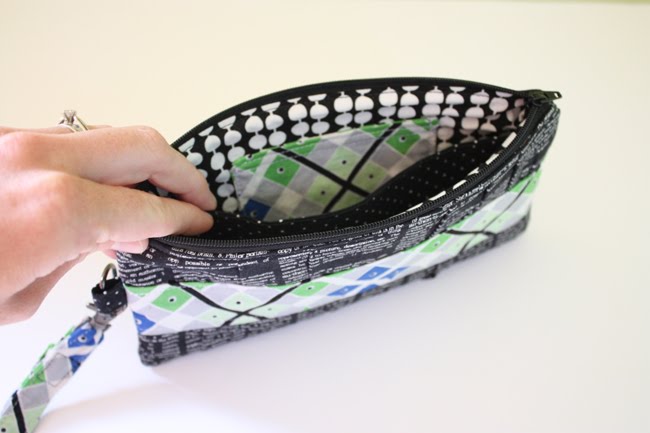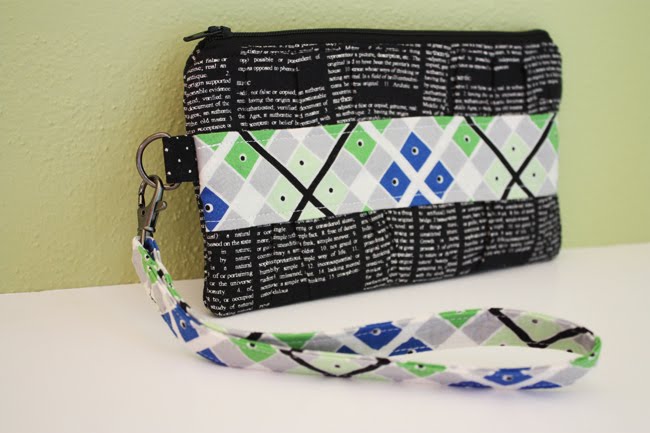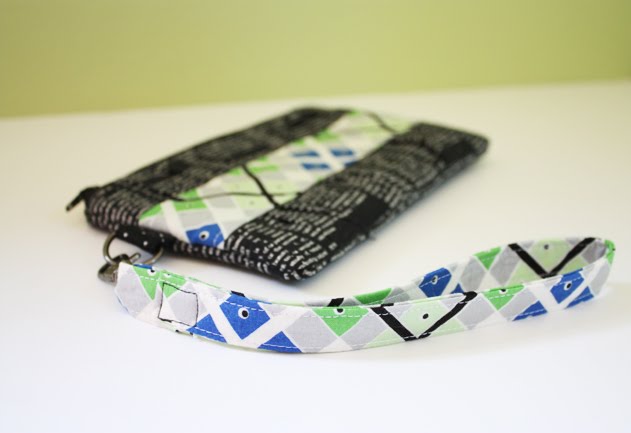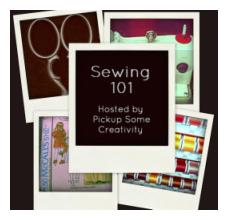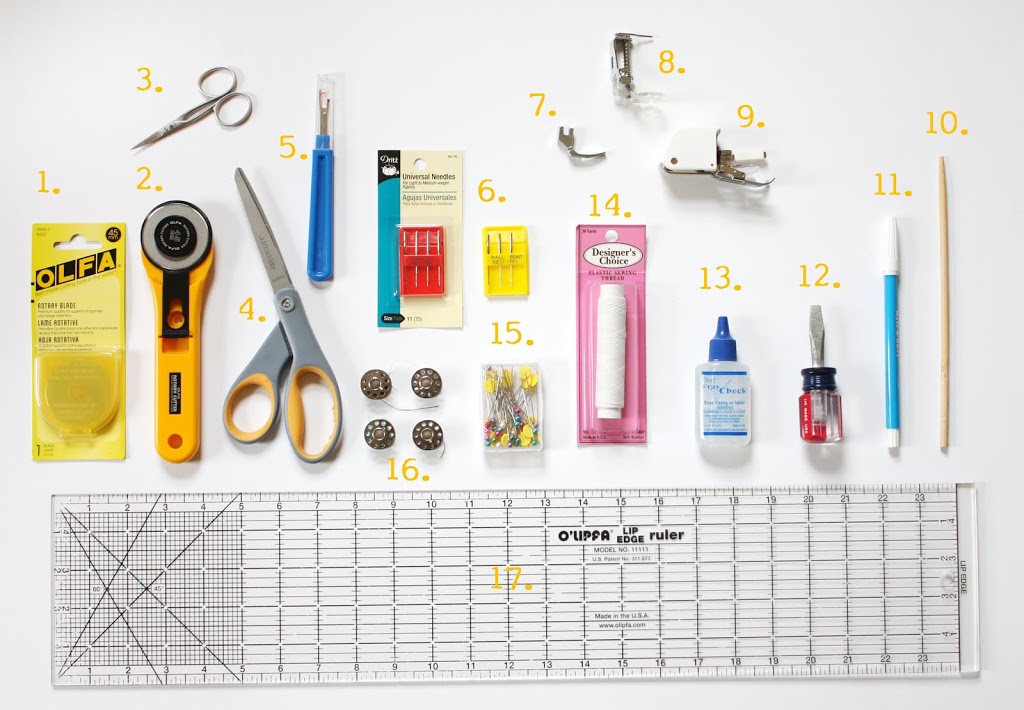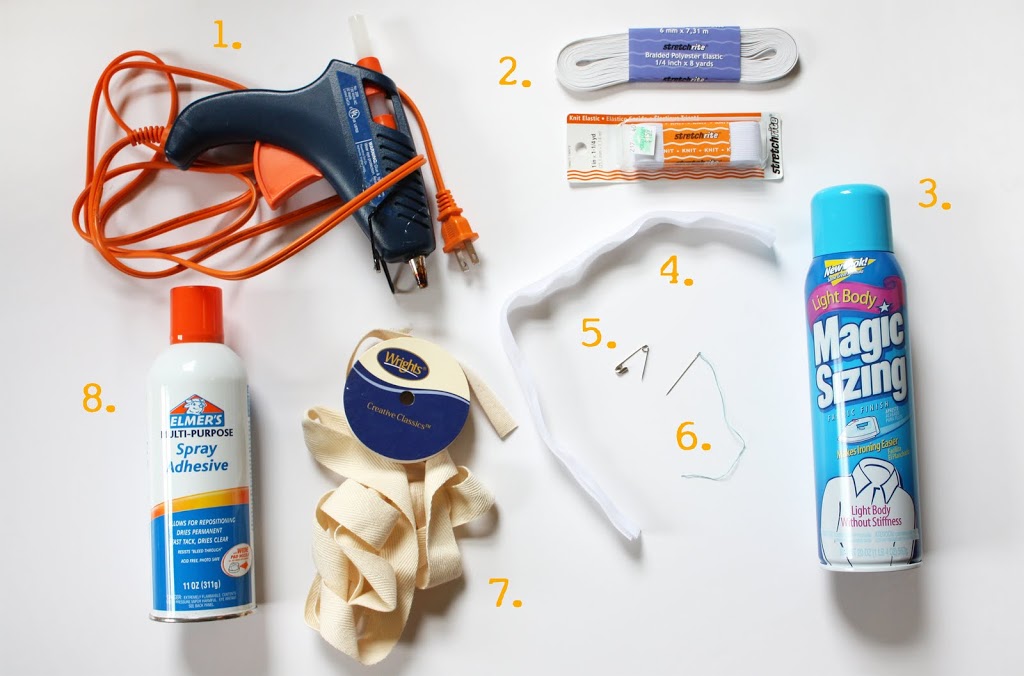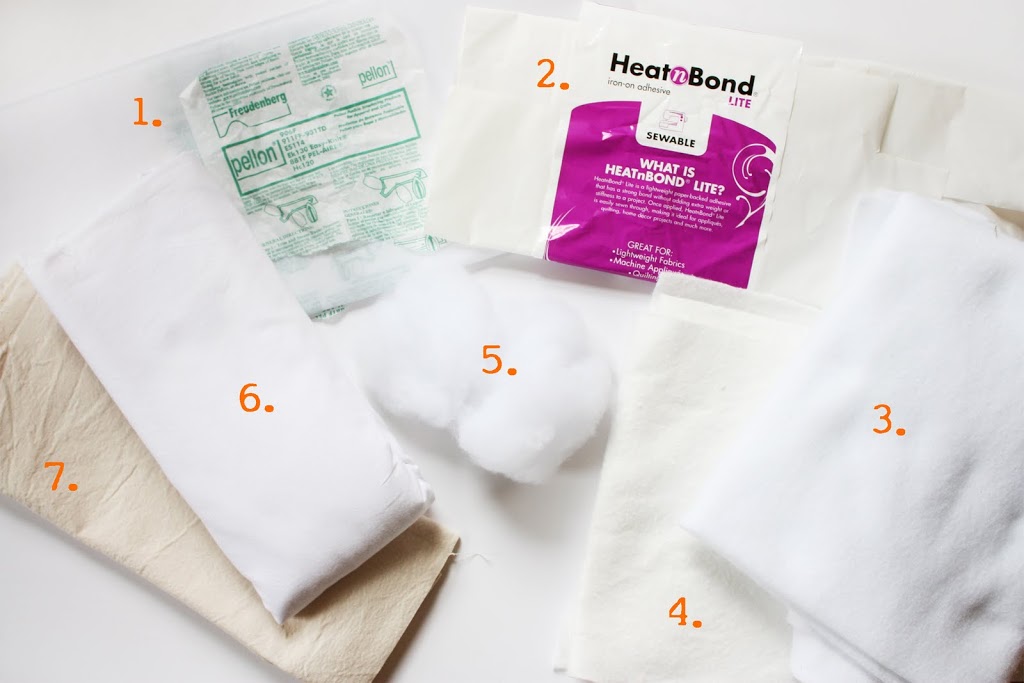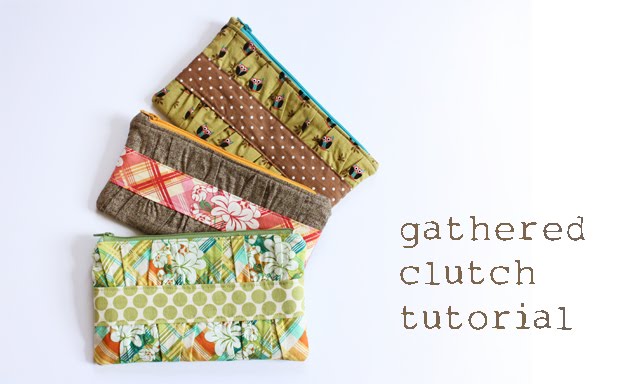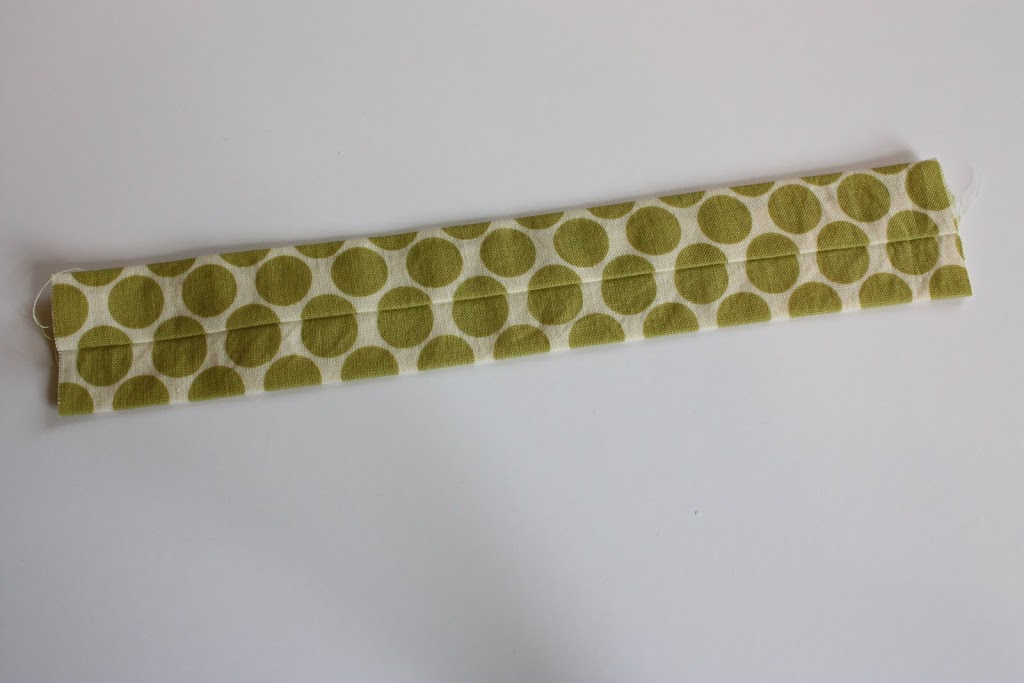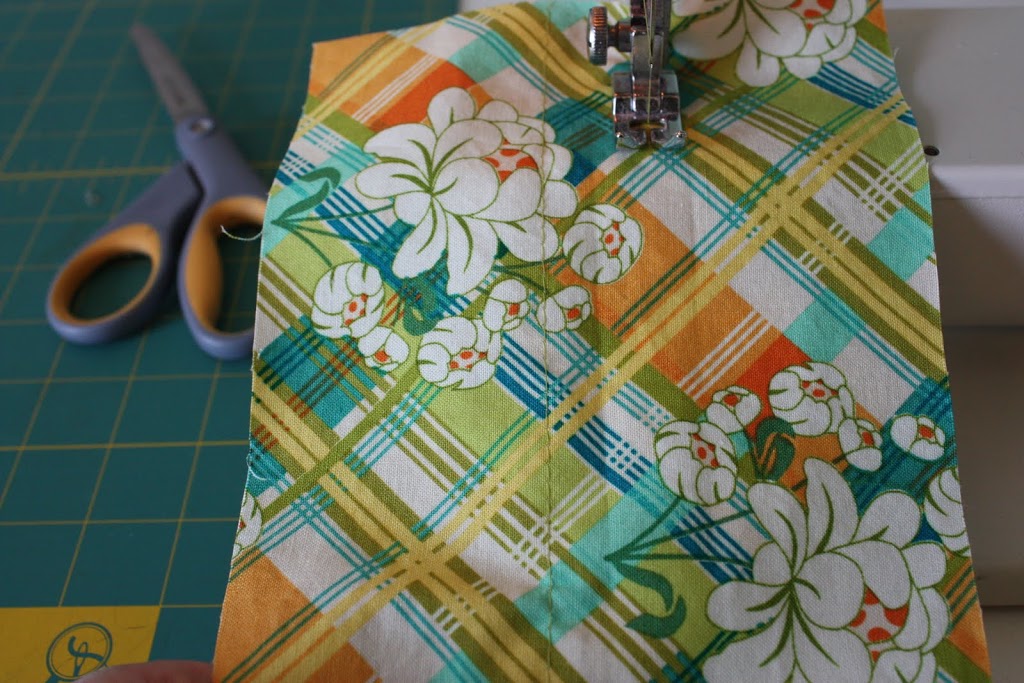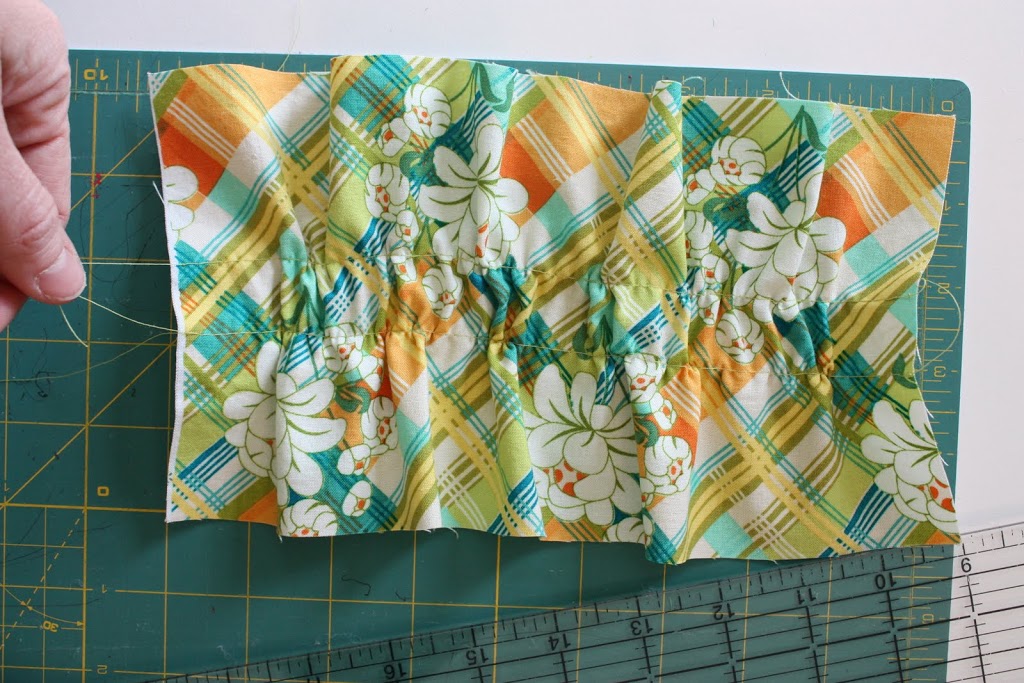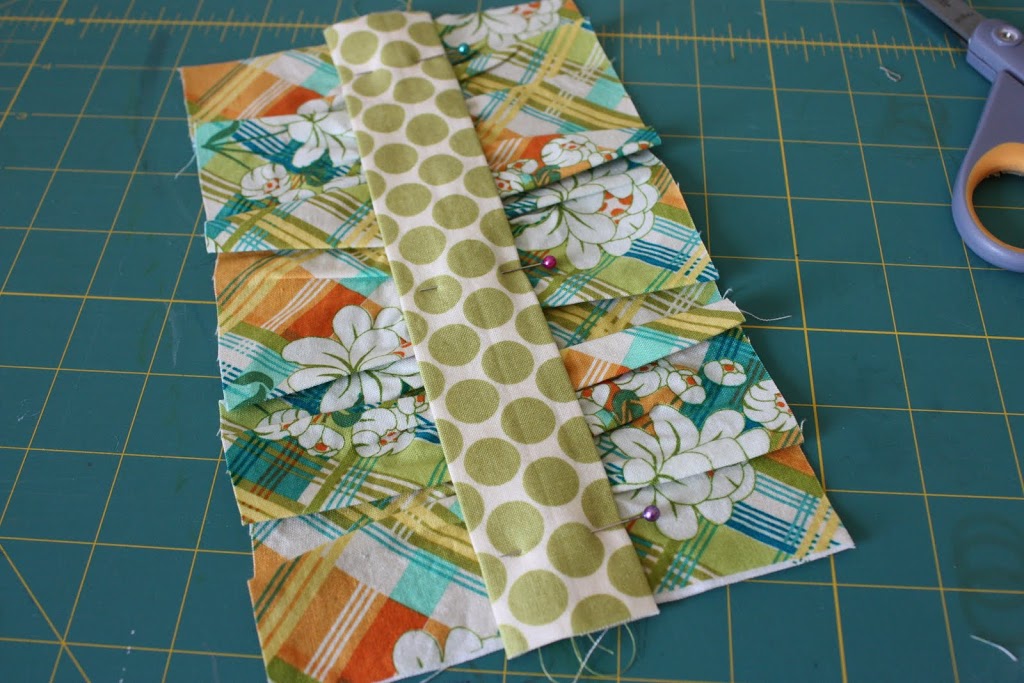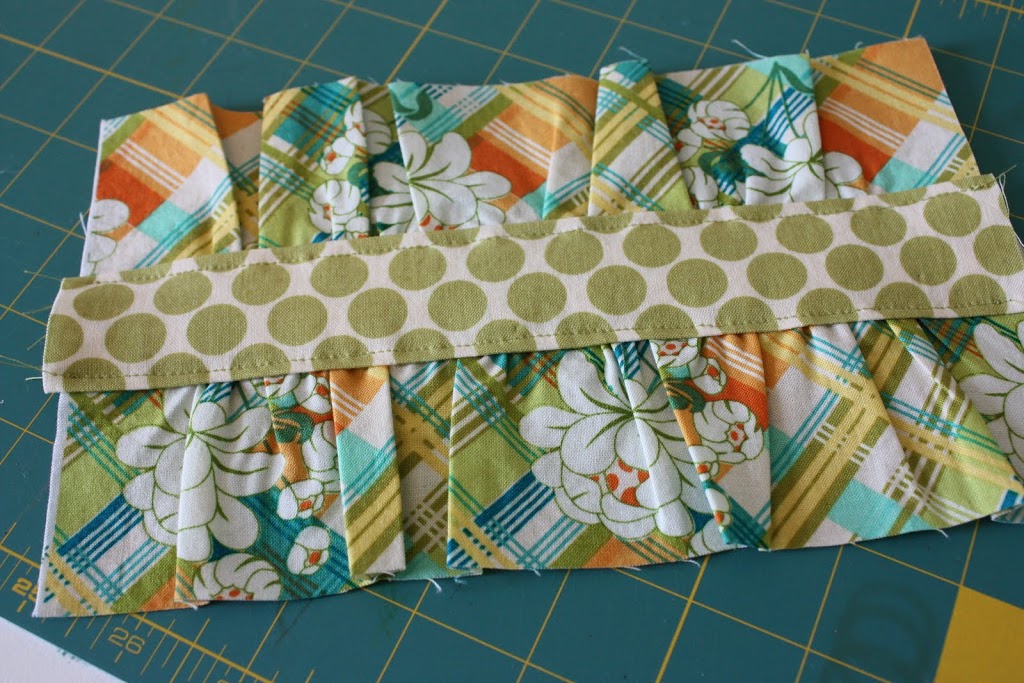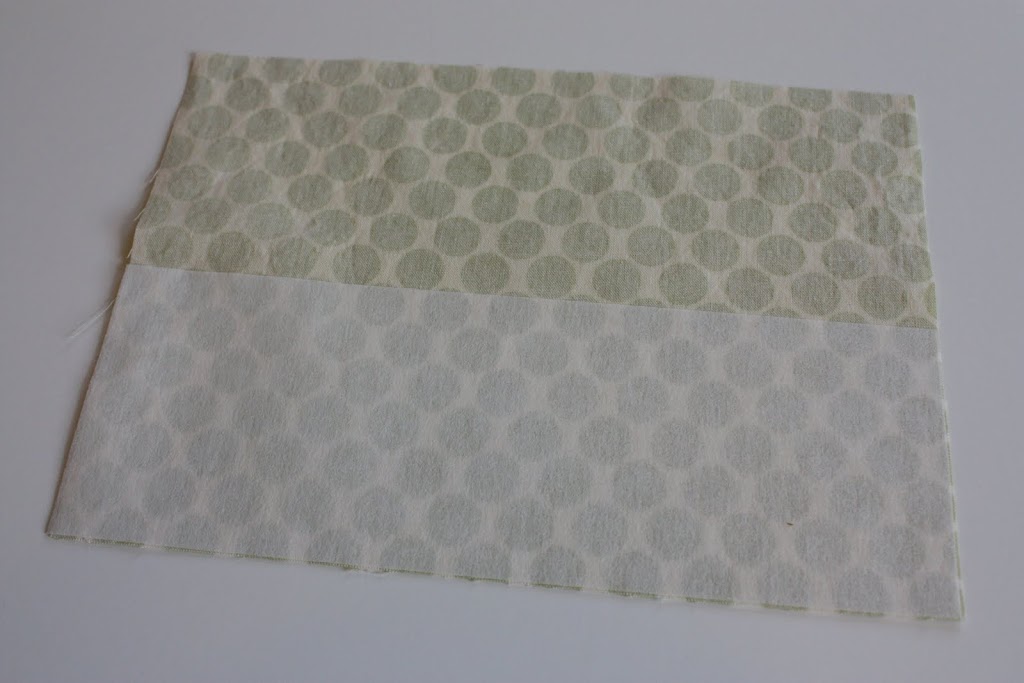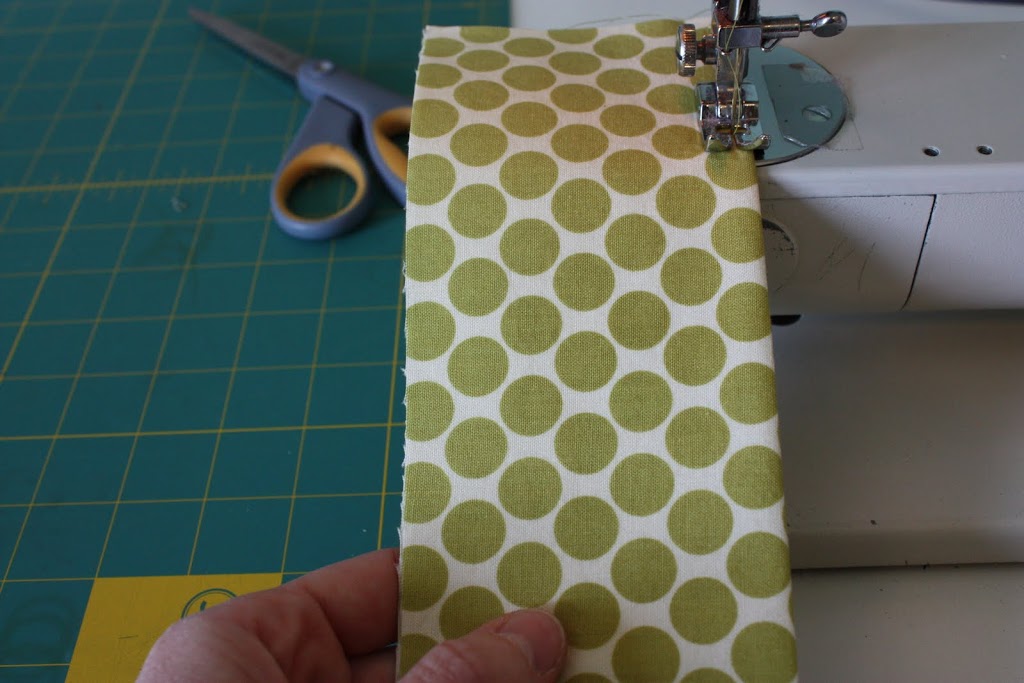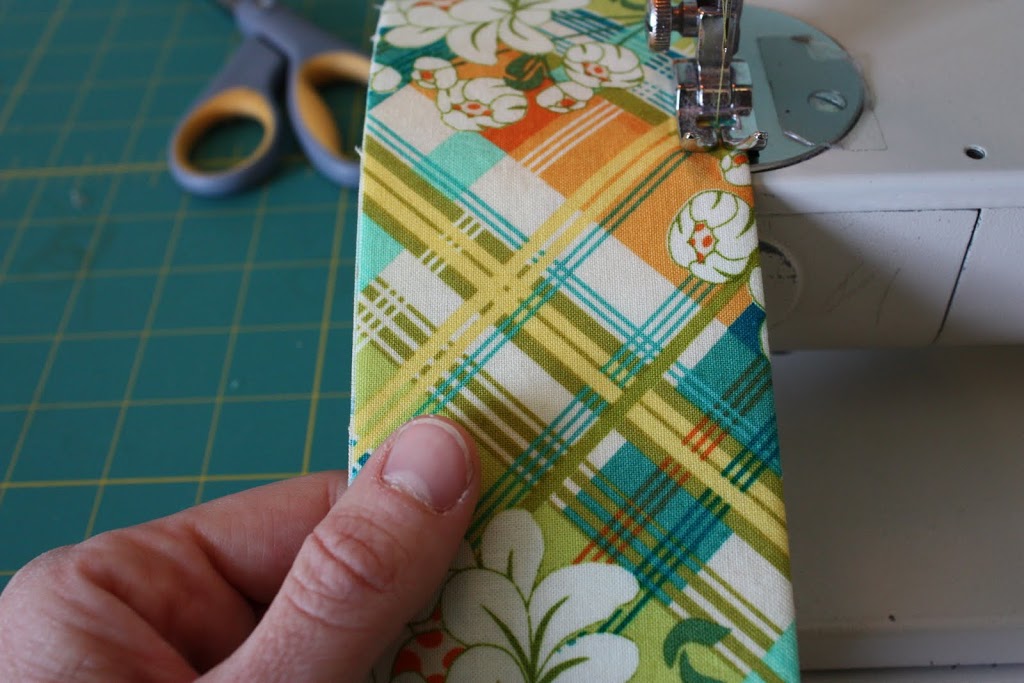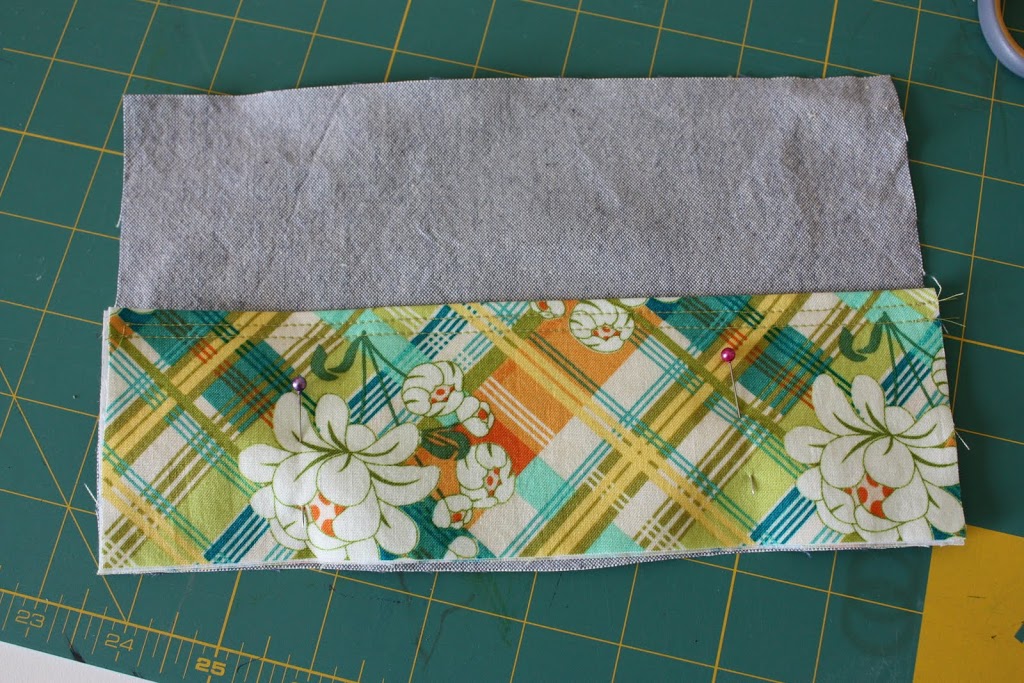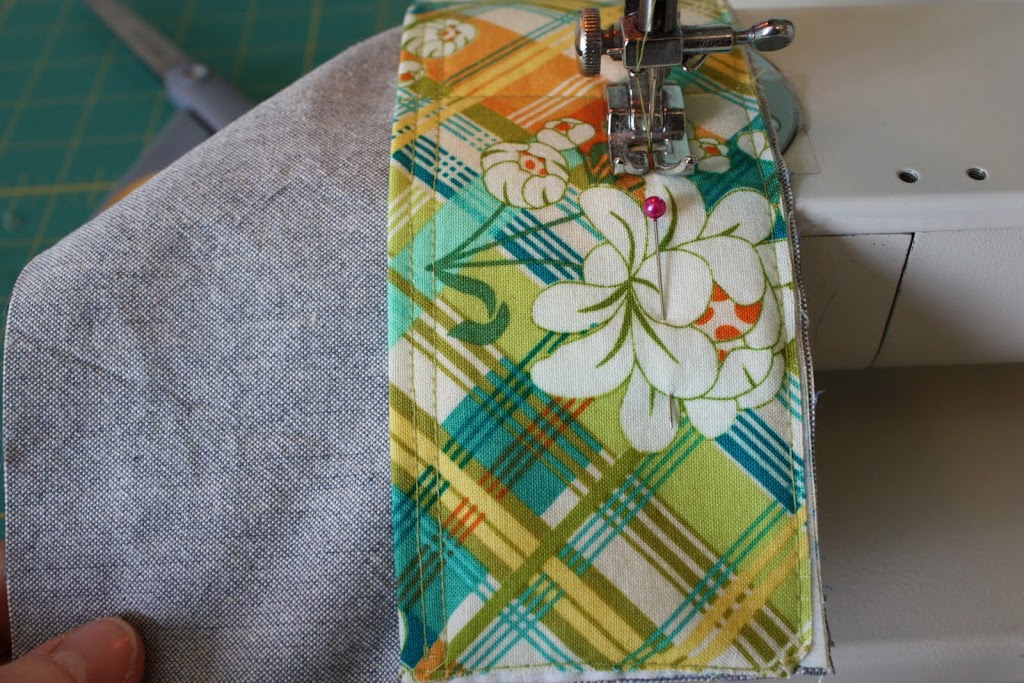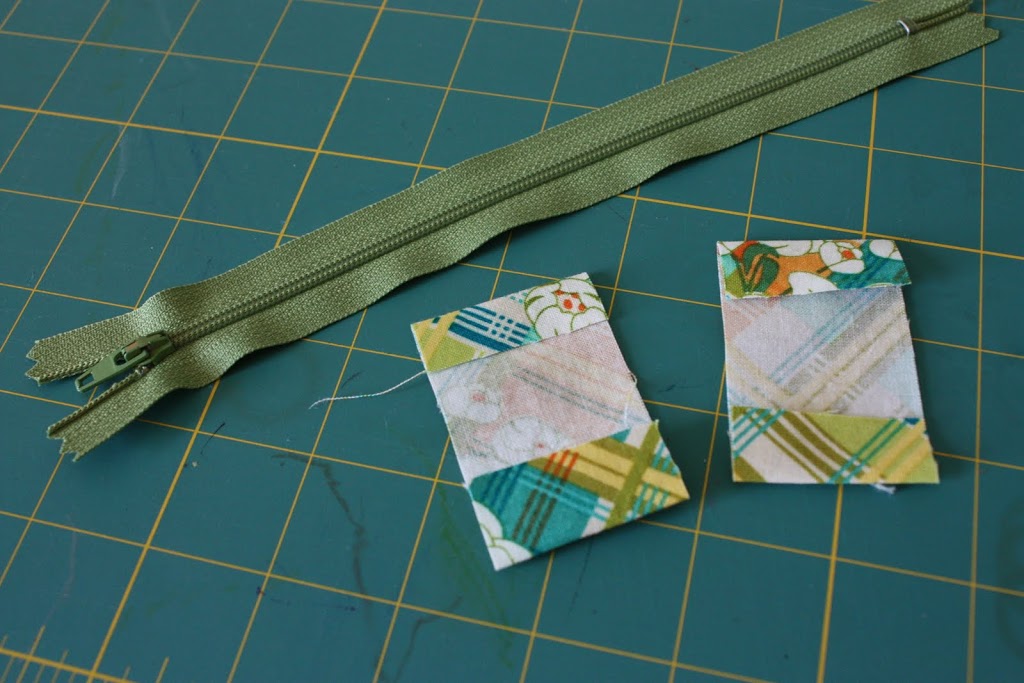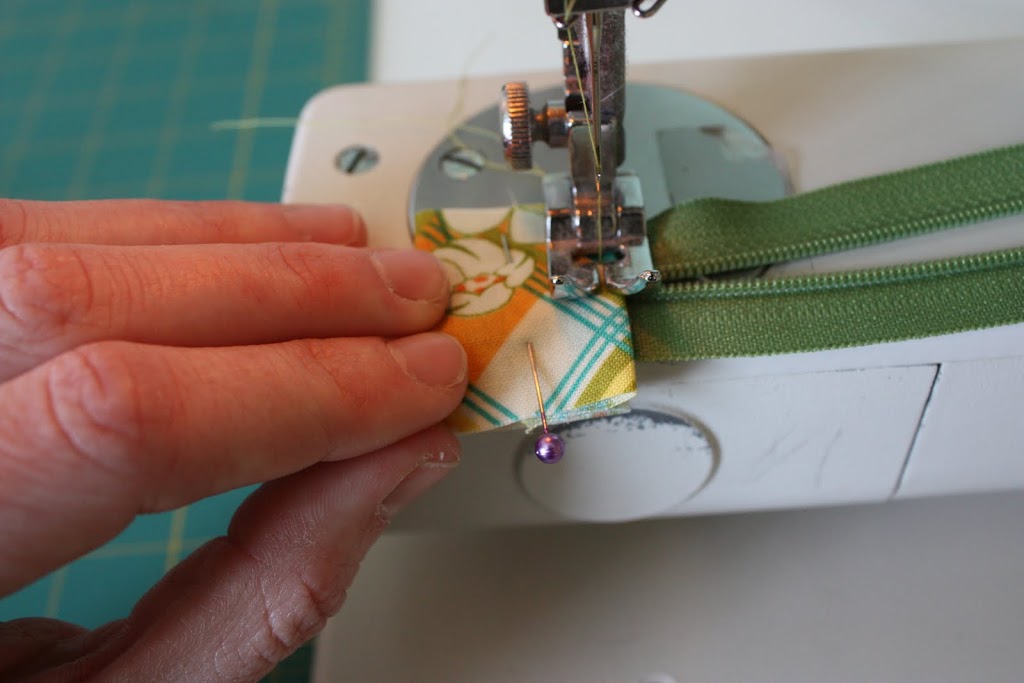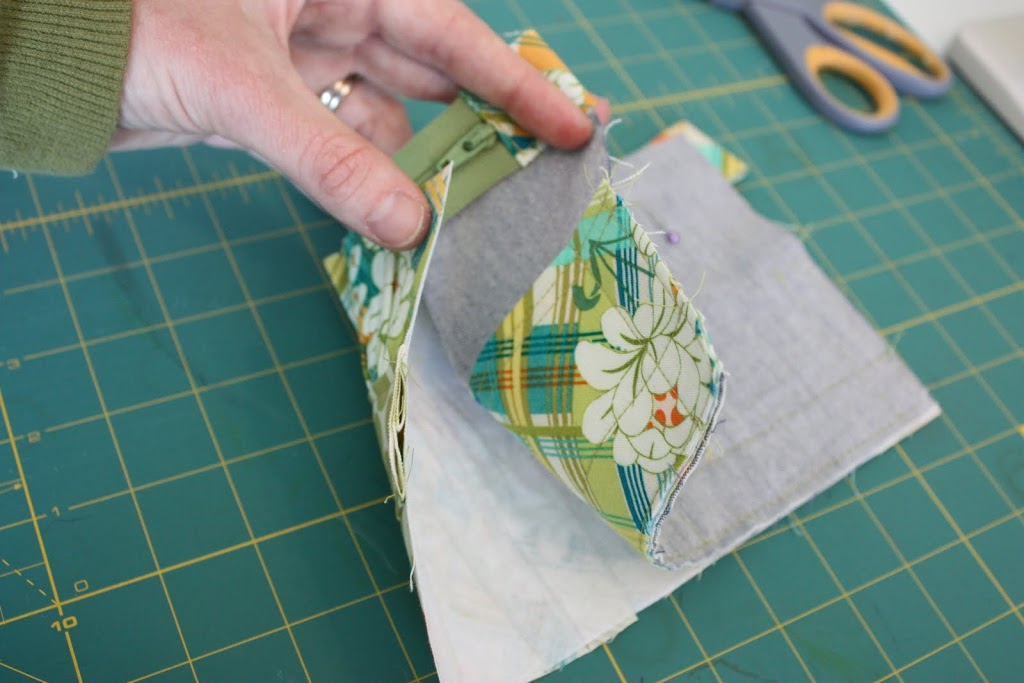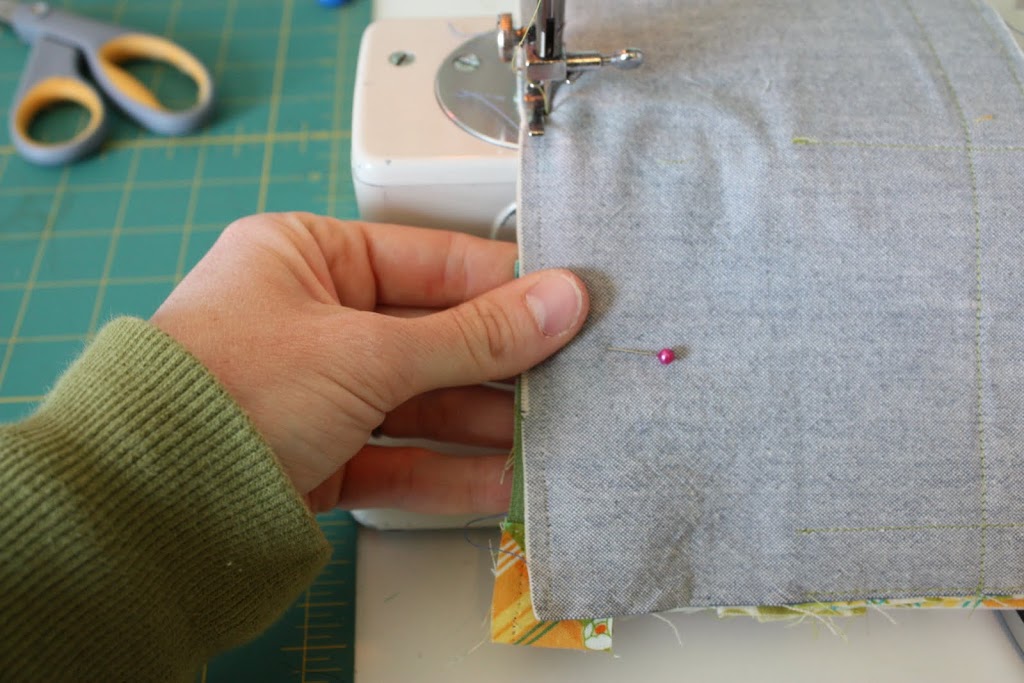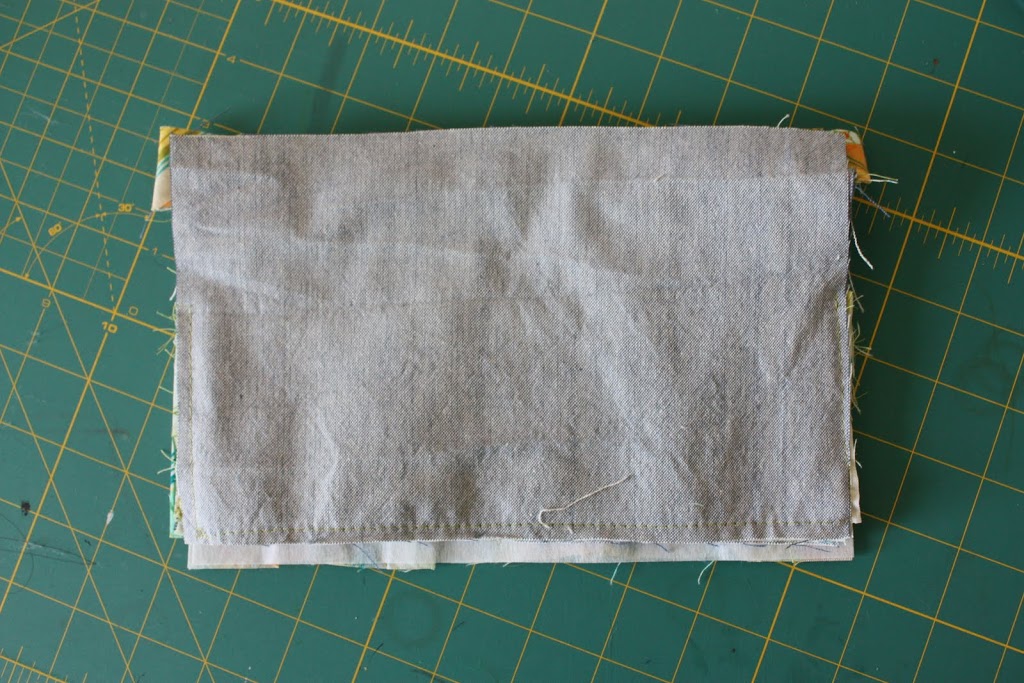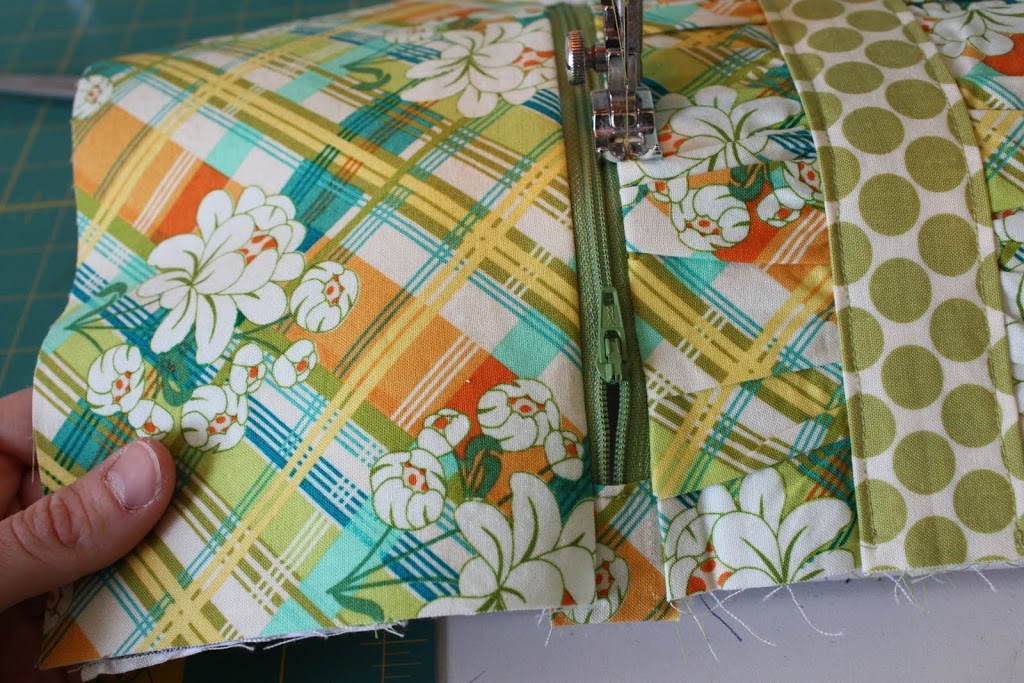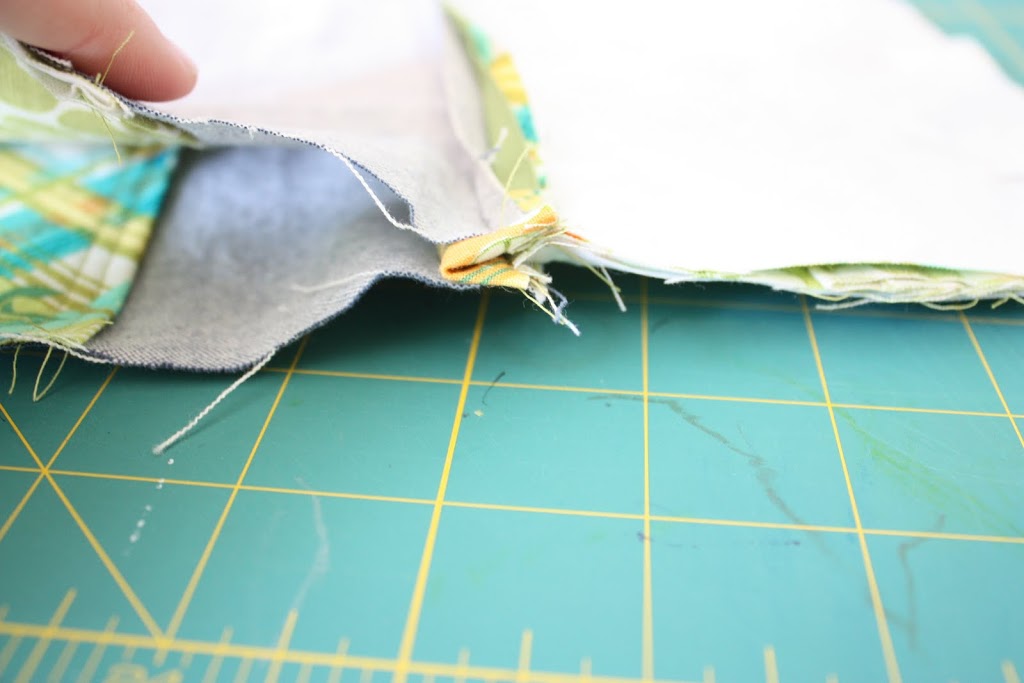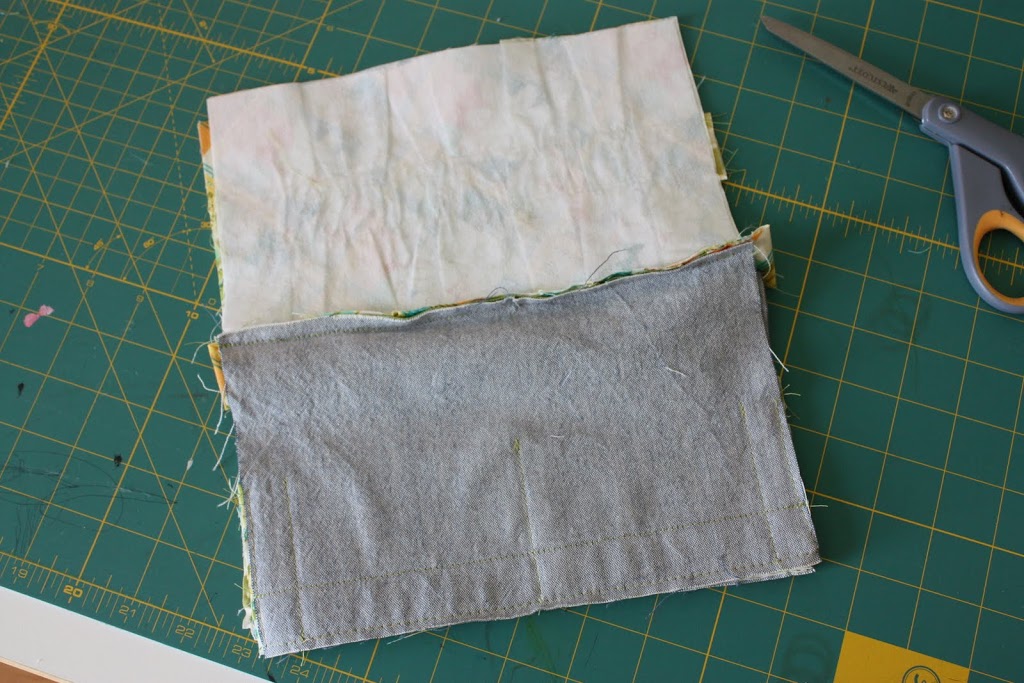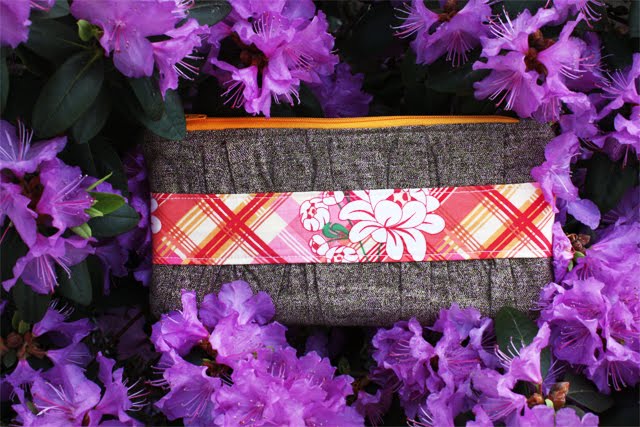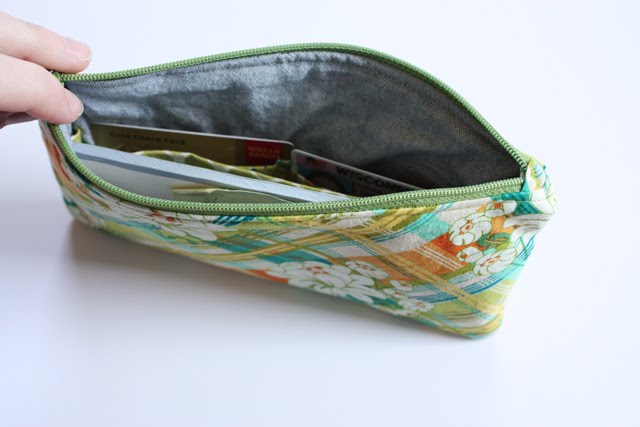P.S. If you’re selling gathered clutches online let me know because I’m working on putting together a post showcasing the current sellers. Just send me an email or leave a comment here.
Sewing 101: Supplies
I’m guest posting over at Pickup Some Creativity with my supplies list too, so be sure to check out all of Chris’ ideas and guest posts with lots of great sewing advice and tricks! She’s hosting Sewing 101 all month, yay!
I’m hoping this will be a great resource for those of you new to sewing (and maybe some of you that aren’t so new). Here are a few of the supplies I keep on hand at all times (hopefully). I used to find myself going to the craft store/fabric store all the time to buy basic stuff, but now that I know what things I typically make, I keep those ready to use in my sewing area. Just a few other notes, I always try and find a coupon to Hobby Lobby, Hancock fabrics (or Joanns), and Michaels when I know I need something. It’s also a good idea to be sure to stock up on thread and maybe even some buttons you like when they go on sale at 50% off.
Here’s what a find myself using over and over again:
-
Extra rotary cutter blades. I purchase mine at Michaels with a 40% off coupon.
-
45mm Rotary Cutter. I didn’t picture the self healing mat, but you must have one to use with the rotary cutter, they come in lots of different sizes, but use a coupon!
-
Smaller scissors for detail work.
-
General scissors. I do have a pair of dressmaking shears (scored big time as a gift), but I use the ones pictures here for everything, even cutting paper
-
Seam ripper. Enough said.
-
Needles. I’ve been known to go through 4 needles on a single step of a project before, so be sure to have a package handy. I use 11 most often, but 14 and 16 are nice for making bags, etc. Also pick up a few ballpoint needles for using when sewing with knits.
-
Zipper foot! My friend. Also for making piping.
-
Darning foot. For free motion quilting. I’ve used these on napkins, etc. You can do really cool stuff with this foot, just think of it as sketching with thread.
-
Walking foot. Definitely buy one of these if you plan on making any quilts. It allows the fabric to feed through evenly, even when there are many layers. I use mine on bags, etc. as well.
-
Chop stick, for poking out corners.
-
Water soluble pen.
-
Small flat head screwdriver for tightening the feet on my machine.
-
Fray check.
-
Elastic thread.
-
Pins, definitely buy the nicest ones you can afford, it makes it so much easier to push through fabrics.
-
Bobbins. Keep a few extras on hand. I rotate with about 8 bobbins, a must when you make a lot of different project.
-
Clear grid ruler. It would also be a good idea to get one of those handy suction cup handles to make sure your fingers stay out of the way of your rotary cutter.
-
Glue gun.
- Elastic. Sizes ranging from 1/4″ to 1″ in width.
- Spray starch.
- Velcro. I have 3/4″ and it seems to work well for a lot of different projects.
- Safety pin. For pushing elastic through a waistband casing.
- Needle for hand sewing.
- Twill tape. I think it can add a lot of detail to a project as well as being useful for a 1001 other things.
- Spray adhesive. I used mine for my mail organizer, but I’ve also heard of people using it with making cards with fabric scraps.
-
Cotton webbing. Fun for tote bags and more, lots of fun colors to choose from.
-
Grommets. I like the special touch it adds to projects. I have 7/16″ and 3/8″
-
Thread, lots of it, especially white, cream, brown. I like to use 100% cotton thread for quilting.
-
Magnetic snaps. For purses, clutches, etc. I buy mine from BeingBags on etsy.
-
Zippers, my favorite notion. I only keep 14″ and 8″ zippers on hand. If I need another length or an invisible zipper I make sure to buy it on my next trip to the store. I buy mine at Zipit on etsy.
-
Snaps/snap setter. I use this brand, I really like the variety they have. Size 16 covers most projects I’ve made.
-
Buttons.
-
Medium weight fusible interfacing. I also have a bit of lightweight interfacing. And it is handy to have some Peltex around (double sided fusible heavyweight interfacing).
- Iron on adhesive, great for applique. I have Heat n Bond, but I think Wonder Under is the same stuff?
- Fusible fleece. Great for bags, zippered pouches, give a nice padded effect and gives body.
- Cotton quilt batting.
- Polyester fill. For making softies, your own pillow forms, etc.
- Muslin. I use a lot for lining pillows and this is another one for 1001 other uses.
- Plain cotton canvas, great to use as a sew in interfacing for bags., etc.
gathered clutch tutorial
Materials needed:
- 1/4 yard each of three coordinating fabrics (you’ll definitely have scraps leftover)
- 7″ zipper (you can always purchase a longer zipper and shorten it, just follow the directions on the package
- scraps of medium weight fusible interfacing
Cutting the pieces:
Main Exterior: cut (1) 5.5″ tall x 9″ wide, and (1) 5.5″ tall x 13″ wide (this will be the gathered front)
Front Band: cut (1) piece 4″ tall x 9″ wide.
Lining: cut (2) pieces 5.5″ tall x 9″ wide
Zipper End Covers: cut (2) 1.5″ tall x 2.5″ wide
Medium weight fusible interfacing for exterior pieces of clutch: cut (2) 5.5″ tall x 9″ wide
Optional:
Divider Pocket: cut (1) piece 8″ tall x 9″ wide (apply interfacing to half, you’ll need at 4″ x 9″ piece)
Card Holders: cut (1) piece 7″ tall x 9″ wide (apply interfacing to half, you’ll need at 3.5″ x 9″ piece)
Take the front band piece and fold it in half the long way (right sides together) and sew together using a 1/2″ seam allowance.
Turn tube right side out and press with seam in the middle. Set aside.
Grab the 13″ wide main exterior piece. Sew two lines of gathering stitches down the middle, about 1″ apart.
Pull the top threads to gather, pull until the length is 9″ long. Press the gathers in place.
Take the front band and pin it in the middle of the exterior piece you just finished.
Top stitch along each side of the band. Take the 5.5″ tall by 9″ interfacing piece and iron it to the WRONG side of the gathered piece. This makes all the gathering and stitching stay in place nicely. Set aside.
Make the divider pocket:
Fuse interfacing to half of the piece.
Fold fabric in half with WRONG sides together, press. Topstitch along folded edge and then add another line of topstitching about 1/4″ below the first line of topstitching. Set aside.
Make the card holders:
Fuse interfacing to half of the piece. Fold fabric in half with WRONG sides together, press.
Topstitch along folded edge and then add another line of topstitching about 1/8″ below the first line of topstitching.
Take one piece of the lining fabric and line up the card holder with raw edges together, one on top of the other baste along side and bottom edged of card holder (the plaid fabric).
Grab your credit card or driver’s license and mark with a pin how far you want your card to stick up from the slot. Sew a line across the lining/card holder piece where you marked with the pin. Sew one line of stitching down the center of the card holder.
Take your card again and mark with a pin where the edge of your card is (you can leave a little wiggle room, but it’s nice to keep it pretty snug to hold your cards in place). Sew a line for the side of the card, repeat for other side. Now you should have two card holders! Set aside.
Making the end tabs for the zipper:
Fold the piece of fabric in half width wise, turn down each raw edge to the center crease and press (the pic above doesn’t show it pressed in far enough). Repeat for other end tab.
Take your zipper and sandwich the end tab around the zipper, just avoiding little metal end stops on both ends.
Topstitch a line straight across the zipper end tab with a very small seam allowance being careful not to hit the metal end stops! Repeat for other end. Trim the fabric tabs to the width of the zipper.
IMPORTANT! The length of the zipper with the tabs on should measure 8.5″ end to end.
Baste the card holders to one piece of lining and the divider pocket to the other piece of lining, aligning the raw edges at the bottom.
Almost done!
Assembling the clutch:
Place your gathered exterior piece RIGHT side up (whoops!, had it wrong in the pic, don’t worry, just get out your seam ripper and start again). Put the zipper teeth side down with the pull tab to the LEFT. Then put the lining piece WRONG side up. Pin in place.
Using your zipper foot sew along the edge of this zipper sandwich. Flip pieces so the WRONG sides are together.
***Please note that in a few of these shots the zipper with end tabs sewn on is longer than the clutch exteriors and linings, it was the first one I made and have since made adjustments to the measurements, all updates are included here in the tutorial.
Grab the other exterior piece, place RIGHT side up. Put the zipper teeth side down with the pull tab on the RIGHT this time. Place the remaining lining piece WRONG side up on top of the zipper. Pin in place, sew. Flip pieces so the WRONG side are facing each other. Press!
Put your regular sewing foot back on and sew a line of topstitching on either side of the zipper.
Now open your zipper about halfway, don’t forget this! If you forget to do this, don’t worry, you can still wiggle the zipper open if you carefully pull at it through the fabric.
If you don’t add the divider or card pockets, I would recommend adding a layer of fusible fleece or even canvas as interfacing, it will make the clutch more sturdy.


